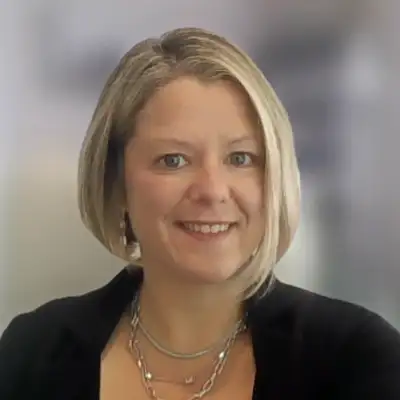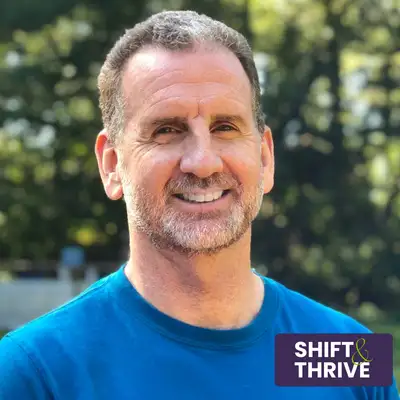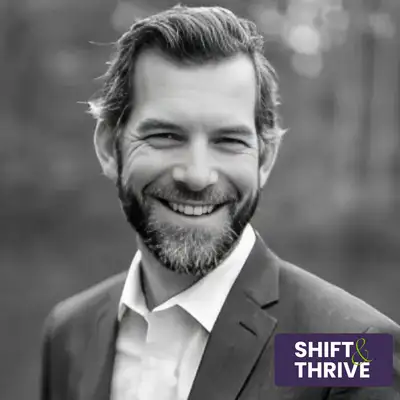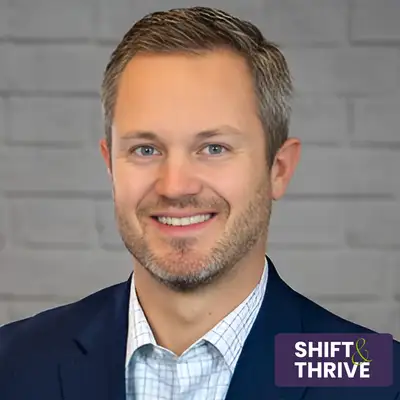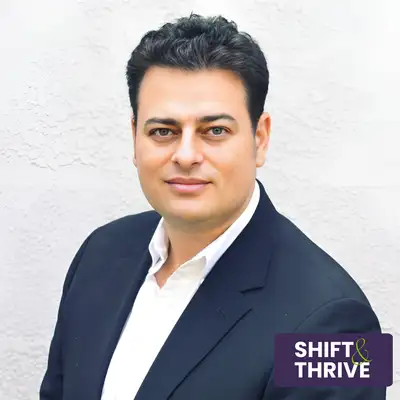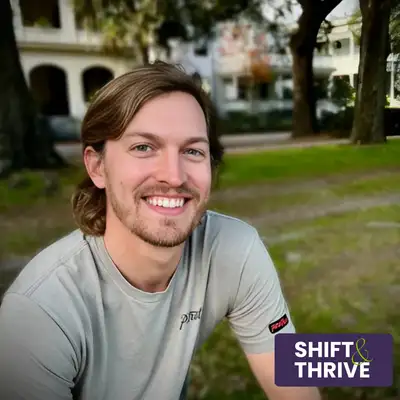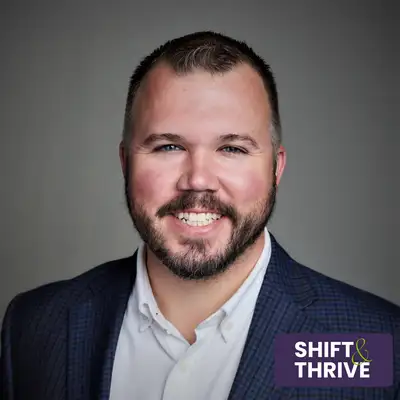- Start with customer truths, not assumptions. Most teams can’t clearly explain why their best customers buy. Without that clarity, go-to-market strategies rely on luck instead of insight.
- Stay close to your market. Long-term success comes from being genuinely curious and consistently showing up for your customers, even when your product isn’t a perfect fit yet.
- Build trust before the sale. Transparency and honest conversations about fit create lasting client relationships and save time for both sides.
- Use process insights to innovate. Mapping customer processes, not just needs, can uncover automation opportunities and help scale efficiency.
- Listen for what isn’t being said. Uncovering the unspoken drivers behind customer behavior can transform how you position and message your product.
- Align incentives around customer success. Simplifying compensation and focusing on client satisfaction over net-new sales strengthens loyalty and drives long-term value.
- Bill Flynn’s LinkedIn: https://www.linkedin.com/in/billflynnpublic/
- Matt McCrann’s LinkedIn: https://www.linkedin.com/in/mattmccrann/
- Pete Jones’ LinkedIn: https://www.linkedin.com/in/pete-jones-gryppcorp/
- Phil Duffy’s LinkedIn: https://www.linkedin.com/in/philipfduffy/
- Konstantin Vilk’s LinkedIn: https://www.linkedin.com/in/konstantin-vilk/
- Brad McGinity’s LinkedIn: https://www.linkedin.com/in/mcginity/
- Matt Farry’s LinkedIn: https://www.linkedin.com/in/mfarry87/
- James Loffler’s LinkedIn: https://www.linkedin.com/in/jamesloffler/
- Spotify: https://open.spotify.com/show/2D1YbT2QhKxIwbREpU7EMb
- Apple Podcasts: https://podcasts.apple.com/us/podcast/shift-thrive-ceo-insights-on-driving-change/id1740828813
- Amazon Music: https://music.amazon.com/podcasts/fa60b654-1955-4055-93df-fdd40c2a5c8f/shift-thrive-ceo-insights-on-driving-change
- iHeart Radio: https://www.iheart.com/podcast/269-shift-thrive-ceo-insights-166792501
- Pandora: https://www.pandora.com/podcast/shift-and-thrive-ceo-insights-on-driving-change/PC:1001086797
Creators and Guests
What is Shift & Thrive: CEO Insights on Driving Change?
In today’s business world change is the only constant, and mastering transformation is the ultimate key to success. Welcome to Shift & Thrive!
Each week, Host Natalie Nathanson will bring you conversations with CEOs, who delve into how they successfully drove critical change in their organization.
This show is sponsored by Magnetude Consulting, bringing you the thinking power of a Growth Consultancy and the Getting-It-Done Power of a full-service B2B Marketing Agency.
Natalie Nathanson: Welcome back to Shift and Thrive. I'm Natalie Nathanson, and in this special compilation episode, we're diving into the foundation of any great go to market motion. The customer, you'll hear from CEOs, founders, and other executives who've doubled down on understanding what really drives buying decisions from uncovering why your best customers buy.
Avoiding tech first messaging traps and aligning cross-functional teams around a shared view of the customer. In today's environment, as
buying committees grow and paths to purchase grow less predictable. While at the same time we are seeing AI generated content flood every channel. Your target market is more distracted, harder to reach, and slower to trust. The things that worked a few years ago, just don't break through the same way today.
This is true not just for how you show up in the market, but how you build position and prioritize your solution and where to place those strategic bets in your business. So growth today always starts with a sharper and more dynamic view of your customer, and that's where this episode focuses. So whether you're launching something new or evolving, how you show up in the market.
Or where your solution is oriented. This compilation is packed with perspectives to help you stay grounded in what really drives growth. And if this episode sparks some ideas for your own go to market, be sure to follow Shift and Thrive. We've got more compilations and many more deep dive conversations coming.
Bill Flynn: I'm constantly telling my, my leaders to slow down and right, and actually don't start so quickly. Make sure that you've actually thought through some things first, had some conversations, um, understand, you know, um, what causes your best customers.
Not all your customers, but your best customers to buy from you. And when I ask this question, everyone has an answer. And then I ask, well, how do you know? And those answers are less convincing, right? You know, well, I just know it's, you know, it's, uh, oh, I've talked to my customers and I said, well, what do you talk to 'em about?
I said, well, I ask them what they want. And I said, then what do they say? And they say, tell me what they want. And I said, well, is it actually what they paid for? Well, no, you know, so, 'cause. We, we, we as consumers, we buy differently than we're sold to, right? There's a supply side and a demand side,
and
we don't really understand, not enough of us understand the demand side of selling, right?
And marketing is that, uh, we, you know, we have these, and I'm not sure what your model is, right? But, you know, I, I always focus on, hey, it's, it's awareness first. Then there's interest generation, there's qualification, then there's some sort of, you know, um, needs awareness, you know, needs analysis, et cetera.
Then you demonstrate something and then you go through the negotiation close, et cetera. Um, and that's how we sell. But that is not how people buy, right? People buy, um, through two real,
two
main processes. One is that,
You know,
there needs to be some sort of struggle. Some sort of, uh, dissatisfaction that they have to have.
If there's no dissatisfaction, they're not going to move. We don't like to move the brain like status quo. You know, a lot of things have to have us move and we can't assume just because we think our product is awesome, that people are gonna think the same thing. And I would say this to folks all the time, and I would ask them, you know, why do people buy from you?
And basically the answer was, because we are awesome. And I say, I'm, I'm, I'm, I'm sorry to disappoint you, but people don't really care how awesome you are. They only care how much your awesomeness does for them,
Right.
It's a very self-interested model. So, you know, we, we have to have this dissatisfaction.
Um, and then, you know, so there's this model called Jobs to be Done, which, which has this process that people go through, which is, you know, there's, you know, you have to have some sort of thing that sparks your interest. Either it's a push or a pull, right? And if it's a push, it's like, you know, you know, something broke or you're dissatisfied, or something's working, or whatever that's pushing you, or you see something that.
Like, Ooh, that's looks good. Um, but then you just sort of think about it for a while, right? And, and you're, and you're not really actively doing anything. And then something else happens. Maybe, let's say my, my example is always like a lawnmower, right? It, it, then the lawnmower finally breaks, or it's the third time you've had its service and you're like, I just gotta get a new lawnmower.
Um, and now you start actively looking for lawnmowers. Um, and so you're, you're, maybe you're going to a shop or you're seeing things you're advertising, et cetera, and then you, you begin now the decision process, you n narrow it down to two or three different things. But what also happens is in that model is, so that's the push and the pull, and that's moving you towards progress.
But there are also two aspects, two forces that are causing you not to move, which is habit and anxiety. Which is, you know, well, you know, these new lawnmowers are really fancy. You know, I'm I gonna look stupid in my front lawn if I don't, you know, know how to do it, or, you know,
Uh, it's probably gonna be a lot more expensive to fix because there are all these moving parts.
You know, you have all these reasons to not do stuff and we, as we as sellers and marketers don't realize that that's part of our process. We have to help them have to ease that anxiety and that habit. And if you haven't done all that work. So that's my long way of saying if you haven't done all that work before you do your go to market, then your go-to market is now a guess and, and you're hoping much more for luck.
Um, and, and you could have made it a lot easier on yourself if you really just spent, you know, one or two weeks probably doing some work up front
that would've changed what you did.
Matt (2): product market fit, um, you have to get close again, going back to
the customer,
start with customer,
identify
who is your customer.
And your product may not be what they need right now. But if that is your business and that is your market, um, you stay very close to them. You
stay in
front of them, on the side of them, or at
the same
table, wherever they'll let you sit, you stay with them. Um, and you're genuinely curious and looking to apply the resources of your company, your business to solve their problems and you're looking for that overlap.
Um,
and if you're committed to it, um, you will, and you're able to adapt, pivot, or, or develop quickly, um, you, you will close that gap.
Um,
and once you do, um, if you do it right, you have a customer for life, um, that will keep you. Uh, in the know on future requirements or challenges that they're having and challenges that your customer is having is opportunities for you to problem solve.
So the more you can do that together with your customer, your market, the better shape your company and your growth prospects will be.
Matt: Yeah, that's a really tremendous insight. So thank you for sharing that. And I can see where, uh, just having that mindset, like for me, like your leadership and the organization has really helped you guys become kind of the pioneers and leaders that you are in the space. I'm curious, like on that vein, like, are there other things that, um, that you've done as an organization that really help you in that kind of, you know, market leadership role? clear messaging, um, again, starting with customer, what is it that they're talking about? What is it that they're concerned about, need to hear, need to understand, um, and then communicating that.
Matt (2): So now, um, you're kind of taking a step back with the insights and knowledge that
you've gained from,
You know, leaning forward into a market and now you can talk to that broader market. Um, realistically, you want to meet the early adopters in your market. That's where you want to start. they're the ones that are most, um, uh, uh, open to trying new technologies, maybe are more interested in solutions or services that meet 70, 80 percent of their need, but aren't like a, you know, a.
cookie cutter,
or turnkey
type solution yet.
Matt: Um, but those are the ones if they're, if they're the leaders in their space and they're the most, um,
Matt (2): uh,
uh, open to adopting early technologies, they'll help you.
uh,
and they'll, they may, uh, At least validate your, your business model that validate your product or service, um, and give you enough early revenue to, to
keep you
afloat, to continue to build until that product is mature enough where you can address the broader market, which is not, uh, maybe more risk averse or, um, may not be as willing to try an experimental technology, but in, in the, um, working with your earlier adopters, you have now past performance and you now have a validated product and use case.
Pete Jones: You're still gonna find client fit that isn't quite the right
fit.
You're
still gonna find those ones that. Come in and, and everyone thinks with good expectation
and then it
doesn't work.
You,
you're never gonna be a hundred percent, but it is very, very similar as you say to, you know, bring, bringing a team member on, bringing a client on. It's the same process. Really, all we want between us is the right fit.
Now sometimes we might not say it in the right way, and it might be that, you know, signals are missed or, or, or everyone understands different things. But
ultimately,
if you could. Especially in your, um, line of business, I think it'd be brilliant if you could have a,
a
transparency button, which anyone going to any website could press and know exactly what it was and exactly what everything meant.
Then they'd know if it was for them and
that would
save so much sort of false courtship. Um, yeah, it'd be interesting. I'd be, I'd be curious on your view there.
GMT20250723-135644_Recording_1280x720: there.
Natalie Nathanson: Yeah, no, I think it's very true and right. There's different, different permutations around. Kind of who makes the right fit. Um, like for, for our, in our example, like of a, of a client fit. Um, but whether you kind of already coming in with a lot of understanding and appreciation for marketing or maybe you don't have that, but.
You know, your organization needs that to move to the next level. So regardless of the starting point, I think a lot of it does come to, um, just having those open and honest discussions, setting the right expectations and bringing that through. I think the challenge that, you know, our industry faces, and I think you probably see this a lot and you know, customer experience disciplines is.
Others around you might kind of over promise and under deliver or tell people what they wanna hear. You're sometimes not working from kind of a, a clean slate. You're working from, um, from kind of negative impressions that then you have to overcome that have nothing to do with your own business.
GMT20250723-135644_Recording_1280x720: Yeah. You,
Pete Jones: You, you, you, you definitely are. And I think one thing that bridges that gap, like in our case was, um, you know, a, co a common acquaintance who knows both parties and helps with the matchmaking.
And tho those are really, um, powerful ways, whether it's for, for people to work with you or whether it's for customers, whatever it is, having that bridge of trust, um, really helps. It's, it is like a shorthand to get through a lot of things that otherwise you might never end up working together.
Phil Duffy: you've You never want a customer view of a process. You want a market view of a process. So that's kind of what we did. But once we got that information, we found within, uh, you know, a few little data points, um, uh, of difference that, you know, in general, it was fairly generic across all the customer groups we worked with, and that allows us to build new process maps to say, Hey, if we change this and we change the order that these things are done, and this is, uh, you know, wait time, we can build a robotic technology that's operating now, and then the operator of this robotic technology Can now go and do X, Y, Z in these areas and, uh, you know, double up the efficiency during that time.
GMT20240719-193504_Recording_separate1: Got it. Got it. Thank you. Uh, it does, it brought me back to some of the, the MBA days of some of those examples. We did another one on, uh, And, uh, you know, their process documentation was really the, the impetus for them being leading edge in their automation, uh, kind of opt in optimization practices. So certainly makes a big impact.
Yeah. I'm curious, do you have any, any other examples, um, of kind of how that change plan and kind of change management plan has, uh, kind of paved the way in some of the companies where you've been?
Phil Duffy: Yeah, I mean, so, you know, we started at BrainCorp, um, you know, the whole change management approach, um, and, you know, initially we started off at the, the very, the worker level, you know, the, the user level, then we build it up to, to the, uh, you know, store level, then we build it up to the area level, and we get up to head office, and, and, and we, we build it at different levels, all the way from, you know, uh, operating machine, all the way to, uh, corporate reporting.
Um, but now we're starting to see that happen across the board, you know, robotics companies that are delivering these kind of machines into any kind of areas, whether it's warehouse management to, to, to retail, to, you know, hospitals are starting to build this as a process, becoming the standard, which is incredible.
And, um, We're also seeing a lot of it being automated. There's a number of companies now that are providing technology that allows you to, to monitor robotic operation. There's 4Month, there's Inorbit, there's several others. And they're starting to build this, um, process approach into their reporting as well, which is, is incredible.
Uh, it's now it's becoming much more standardized. You can build a very easy process that you can, uh, you know, uh, present to a customer. Um, so we've done it, uh, there. We did it at, uh, hospitals, um, and my last company, you know, um, we built a, uh, a robotic, uh, character that used AI to have conversations with children.
It was really designed for kids that had social emotional issues or had, you know, mental beh uh, behavioral developmental issues. And so many kids that are on the spectrum and, you know, uh, those kind of problems. And so we built this interaction system that took a child through a whole journey of social emotional learning, improved their confidence, helped their communication skills and many other areas.
Um, but we started to look at how this could be used in hospitals. And we tried a number of different things. We worked with a great hospital, the Children's Hospital in, um, at the University of Rochester in New York, upstate New York. And we started looking at, you know, what are the opportunities for this kind of technology?
One of the big things was, um, surgery. You know, kids come into surgery, um, and they're obviously distraught. They're worried about what's going on. They're, you know, at some point they have to leave their parents. It's a big scary environment. Um, but you think of surgery, you think, well, you know, it's, it's all going to be different, right?
One surgery is this and another surgery is that. We don't know how long they're going to be, but the pre and post surgery operations in a hospital are fairly standardized. And so we were able to take stand by processes, build out process maps as we always do, and then look at opportunities. To bring in this robotic technology, you know, uh, Moxie was the robot to work with children in that environment, and that allowed the child to feel comfortable, allowed the child to engage with someone, ask questions about what was about to happen, and Moxie could answer those kind of questions, and then what was exciting was then the staff, the clinical staff could then remove themselves a little bit from that scenario and spend time on other areas where, you know, they're always rushing those environments.
So again, the same approach. For more information, visit www. FEMA. gov How do we take a technology that we think has the, you know, an advantage, work with the clinicians to understand their problems, process, map their problems out, go back, confirm it, like, do we understand what we're seeing here? Are we seeing what you're seeing?
Oh yeah, you know what, you guys actually really do understand our problem. Hey, we think we can fix it with this, and this is how we can measure it, and this is how you can measure it. Let's see if this works. So, yeah, I've done it several times. I'm about to do it at the new company when we start to launch robots here.
But, uh, that approach to understanding what's happening, making a change to it, and getting everybody on the same page, um, hugely valuable.
Matt Farry: realistically, it's um,
Matt Farry: There has to be this mesh mentality. It's never, uh, it's never entirely separate. Um, everything that feeds in and out of
a
product is everybody else's.
Um, and by that I mean every other department's. Responsibility, uh, as well, just like finance is our responsibility, sales.
like I said,
I'm not good at it, but it's my responsibility. Everybody's got a hand in it.
Um,
So getting all of the departments involved, basically from day one, when you're doing uh, feature requirements, uh, you
know, you're, we're building out wireframes of what we think need to happen.
Um, we're getting into that
point now
where we want to enable other. Um, other customers to basically have this self onboarding mechanism where, um, they don't really have to engage with our sales team. We're sort of trying to move into that product led growth model, uh, which means not only are we shifting the mindset of our sales department and our customer success team, where they are by nature, very involved in every sale.
Uh,
We, the engineering department need to learn how they're going through their sales, um, what the onboarding process has been like with customers. Uh, and then take that into the design, talk to the customers
that they've
dealt with, both business we've won and business we've lost, of why it was successful
or not
successful.
Was there a barrier somewhere in there that we can work into the specs of making sure that we remove those barriers? Um, and that stuff that we couldn't, you know, me as even with.
All of the experience that I have, I'm not going to know those types of specifics. Uh, and no engineer is going to know those types of specifics either. So getting those departments involved right from the beginning, um, is really, in my opinion, is the only way to do it.
GMT20241118-155406_Recording_640x360: The
Matt Farry: flip side of that is we, I feel pretty strongly that it's a, we have to go to them.
Uh, because if it's, if the demand is always inbound, which I think is probably the case in most software companies. And if you end up letting sales be the driver for product release, then it is a very quick downward spiral into building an application that may not be the Appear good or sell well, but not retain.
Konstantin Vilk: Uh, some, some companies are product driven and the misconception with them becomes that, um, that technology drives the market, which is not necessarily true because the technology has to be adoptable.
And, um, Uh, and, um, uh, and the other one is, I don't think we pay enough attention to the customer and what the customer has to say. So that's another misconception because we, really drive towards what we believe, we love our ideas. We fall in love with our ideas because they're our ideas. it's really important to actually go out and listen to the customer, um, make sure that it resonates with them, make sure that you're building what, they want to use.
Natalie Nathanson: Yeah, yeah, that's so true. Um, and they feel related, right? So ultimately, you know, you can have the greatest technology, but if it's not there to solve a problem and a real problem in the business, uh, if you're gonna have a really hard time finding the right customers and building anything that's scalable.
Konstantin Vilk: That's absolutely right.
Natalie Nathanson: Yeah, yeah. Um, so you're talking about, you know, listening to the customer and kind of paying attention to the market. Um, can you talk a bit, a bit more about that? And right, how do you, how do you think we, you know, squash this misconception and help companies do this the right way?
Konstantin Vilk: Of course. Um, I'm a big proponent of, uh, of insights and insights are those little tidbits of information, those little things that are sometimes unsaid by the customer, um, that, uh, that really hit the core of what is needed. Um, so we often look at data and, uh, and process it into information. Data is raw, right?
It's, um, Data is something that we receive, um, but it's not necessarily useful by itself because you can have multitudes of data. You can have, uh, the same, uh, the same results in, uh, interpreted a whole bunch of times. So we process it and we make information out of it, but information is only what's glaring and obvious to us.
And, um, and, uh, but insights are Um, when you actually look at that information and you merge it with what else can you learn, what else can you observe? Um, the best, the best, um, actually example I've been using lately is one I borrowed from, uh, from some of my wife's work actually. Um, so, uh, she's a marketer.
She studies, um, uh, she studies what's been successful in the past. And one of the best examples is actually the Got Milk commercials. Um, they used to be really popular in the U. S., but the interesting thing about them is, um, they went and did market research. They, um, they found that, um, Uh, that people regurgitate what they, what they're told.
So for, for decades, the milk industry has been, uh, has been selling based on milk is so nutritious and it drives this value and things like that. What they did was actually something very different and very unique. They went into people's homes and they started observing, uh, looking for things that are not being said.
And what they noticed is that anytime someone wants something, anytime someone is, uh, wants some cereal in the morning, they'll reach for milk. Anytime they want coffee, they'll reach for milk. Anytime they want to make a cream pasta sauce, they'll reach for milk. And at the end of it, milk is one of the, became one of those things that, um, if you don't have it, it's a problem.
And that's the one that created that got milk commercial, the one that resonated so well with people because what they realized is that what wasn't being said is that without milk you're in trouble, and people will go out in the middle of the night to get it for for themselves for the next morning, but.
The same thing is true across, across the board. The same thing is true for any kind of technology. When you listen to what you have and you look for what else is not being said and drive those insights, drive that truly deep understanding, not only can you create that bond and connection to your customer, but you also inform the product that you build.
Um, you know how to reach your customer. And, uh, so many other things just become obvious to you when they, when they really should have been from the very beginning.
GMT20250620-145516_Recording_separate3: When you're launching a new company or you're launching a new product, it's very, very tempting to kind of sell it to anybody who will buy it, but you've got limited resources. Um, and when you do that, you really dilute the feedback that you're getting back from the market because they're all coming with these different opinions and biases come 'cause they have different perspectives on, on what the needs are.
The more that you can narrow in, um, into that target ICP.
GMT20250620-145516_Recording_1280x720: uh,
GMT20250620-145516_Recording_separate3: the, you get a lot more signal in the feedback that you're getting. Um, you can move much faster because you, you tighten the, the loops on how fast you can build new product, take it to market, get the feedback from the customers, but it takes a ton of discipline to say no to all the other potential opportunities that are sitting out there.
James Loffler: we've got a group of folks that now as a customer success has really focused on a client after they become a customer. And so instead of being compensated on net new sales, they're compensated on client satisfaction.
They're compensated on. Um, making sure that they've got a robust technology plan in place. That's really tied to our customers, uh, strategic plan. And, uh, in the end that really helps us drive results for our customers. And so that team, yeah, once you become a Loeffler client, they're really focused on effectively managing and growing and, uh, helping that customer.
Succeed. And then we've got the unified sales team. That's really out leading the charge, talking about new products and services. Um, As well as additional products and services in the markets that we serve.
Natalie Nathanson: Sure. You touched on kind of incentives and making sure that that's all aligned. That's something that I find so interesting and can be so hard to get right. You can kind of over, over engineer and then it becomes too complex. Uh, you can set an intention with the, you know, the best of intentions, so to speak, in mind, uh, and then it can backfire.
So curious, you know, from, uh, kind of a, a team standpoint, like how did you put those right incentives in place for the different teams?
James Loffler: Yeah, you know, a lot of our homework was done by networking with companies like Loeffler in the technology space and I'm lucky to have a lot of friends in the industry. And so it's always nice to be able to call on them and, and, and learn from their experiences much like we're doing today. And so we benchmarked that.
I think, you know, a trend for us is really focused on, um, Making it as simple as possible, you know, so a lot of our programs revolve around a monthly contract versus maybe a product and percentage. And so that's starting to simplify, uh, our compensation programs.
Speaker View: Um,
Natalie Nathanson: And then, you know, the other area that you touched on was marketing strategies, which is obviously near and dear to my heart. Um, tell me, you know, how have you thought about that through the journey?
James Loffler: Yeah, you know, I think the biggest thing for Loeffler is that since 1986, we've grown as an organization and we've got a very diverse portfolio of technology solutions. So, copy printers, unified communications, physical security, IT managed services, um, cyber security as a service and, and even more in addition to that, right?
And so for our clients. That's a lot to consume. And so we've spent a lot around marketing, talking a lot more about Target Customer Profile and talking more about how to tell a really unified story to our client that, that lands well with them, that's relevant for them. So, um, again, starting with Target Customer Profile and the story is what we build a marketing campaign around.
Um, that's something that you've been able to help us with and, and, uh, And that's really kind of a platform for all the other marketing activities that we have, whether it's, um, filling top of funnel with, um, you know, doing all the Google keyword searches or a targeted campaign or educational events, those really lead to the top of funnel through that target customer profile.
You
